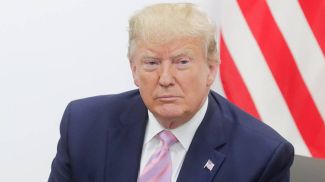BEIJING, 3 October (BelTA - Xinhua) - China's currency renminbi, or the yuan, officially joined the elite reserve currency basket of the International Monetary Fund (IMF), in its latest step on its way to becoming a global currency.
The IMF on Friday announced the launch of its new Special Drawing Right (SDR) basket, including the yuan, effective from Saturday, saying it was a "historic milestone" for China, the IMF and the international monetary system.
The inclusion makes the yuan one of the five reserve currencies fully endorsed by the 189-member organization, joining the U.S. dollar, the euro, the Japanese yen and the British pound.
The executive board of the IMF decided the weight of each currency in the new SDR basket, on Friday, with the U.S. dollar at 41.73 percent, 30.93 percent for the euro, 10.92 percent for the yuan, 8.33 percent for the Japanese yen and 8.09 percent for the British pound.
LIMITED SHORT-TERM IMPACT
Analysts said that while there will be several long-term implications of the yuan's SDR inclusion, the impact will be limited in the short term.
"Currently 285 billion U.S. dollars is allocated to SDR members, and the yuan's inclusion would lead to capital flows of 31 billion U.S. dollars for direct SDR allocation," Nathan Chow, DBS Bank's economist, estimated.
Data suggests that central banks around the world might have already started to re-allocate reserves. Cumulative foreign institutional flows into yuan treasury bonds reached an all-time high of 321.9 billion yuan (48.5 billion U.S. dollars) in July, up 28 percent from January this year, according to a report by DBS Group Research.
Alicia Garcia Herrero, chief economist for Asia Pacific at NATIXIS, argued that central banks' expected purchases of the yuan to comply with the SDR basket would be tiny. "Only if central banks increase their investment in the yuan beyond the required amounts for SDR, will it make a difference to China's thirst for capital inflows," she said.
Zhu Haibin, China Chief Economist at J.P. Morgan, forecast that reserve managers might gradually increase holdings of yuan-denominated assets, possibly reaching 5 percent (or a net inflow of 350 billion U.S. dollars) in five years. A Standard Chartered Bank report expects that the yuan will comprise 5 percent of global reserves by the end of 2020.
While some investors have speculated there might be a fast depreciation of the yuan after its SDR entry, Zhu regarded the probability of this scenario as very low, adding that the statement from the Chinese authorities that "there is no basis for long-term depreciation" should be taken seriously.
In the short term, the depreciation of the yuan may be unavoidable as China will allow the exchange rate of the yuan to be increasingly determined by market forces, but there is no need to worry about the yuan's depreciation in the long run as "the Chinese economy is still growing rapidly relative to other economies, with active FDI and outbound investment, as well as abundant foreign exchange reserves," said Grace Yu, counsel at Linklaters law firm.
MORE WORK TO BE DONE
In a statement released hours after the IMF announcement, the People's Bank of China, the central bank, called the yuan's SDR inclusion "a milestone in the internationalization of the yuan" and "a recognition of China's progress in economic development as well as financial reforms and opening up."
Yet the yuan's SDR entry is not where it ends.
It is more likely to be used as a catalyst than reason to end China's capital account opening and ongoing domestic financial reforms, UBS economists Donna Kwok and Wang Tao said in a report.
More work should be done to increase the availability and liquidity of investable yuan assets, advance the development of onshore financial markets and hedging instruments, and minimize perceived risks associated with Chinese policies, especially the exchange rate of the yuan, they said.
China should focus more on the stability in trade-weighted exchange rate rather than the U.S. dollar-yuan exchange rate. Such a move could provide a transparent scheme to anchor market expectations and allow for modest depreciation of the yuan against the U.S. dollar, if the dollar maintains its strength, without triggering market panic, analysts said.
To turn the yuan into a global currency, China has advanced reforms to make the yuan freely convertible under the capital account. It has also enhanced data transparency and expanded overseas institutions' access to its inter-bank bond market and inter-bank foreign exchange market.
With steady economic growth and higher bond yields, China has seen growing overseas interest in using the yuan and holding government bonds, despite a depreciation against the U.S. dollar in recent months.
The yuan was the fifth most active currency for global payments by value in July, with a share of 1.9 percent, an increase from 1.72 percent in June, according to data from global transaction services organization SWIFT.
"Over the long-term, a more market-based currency will result in the yuan becoming more international and resilient," said Peter Grauer, Bloomberg LP chairman. "The yuan can achieve its enormous potential as an international trade settlement and investment currency over time."













